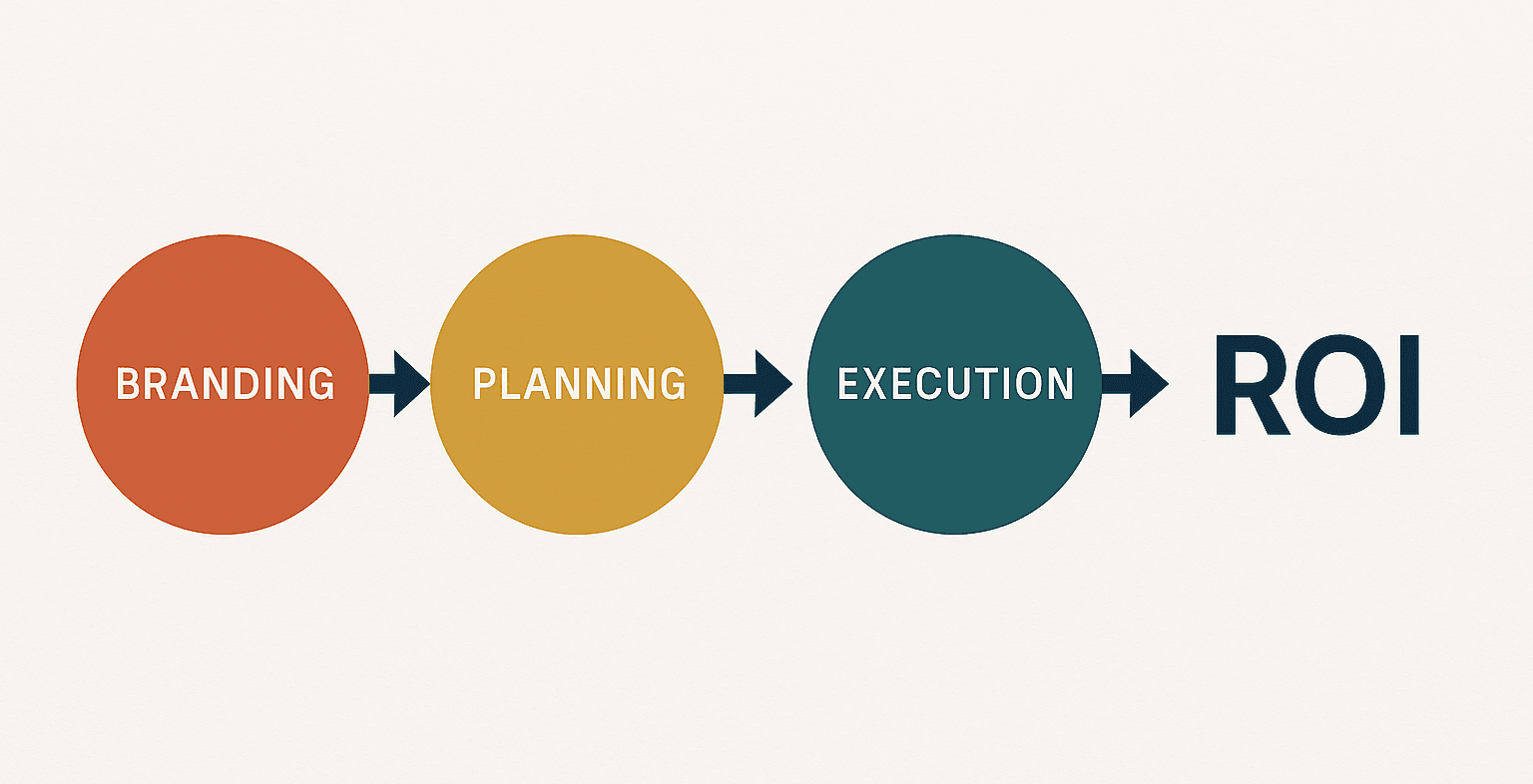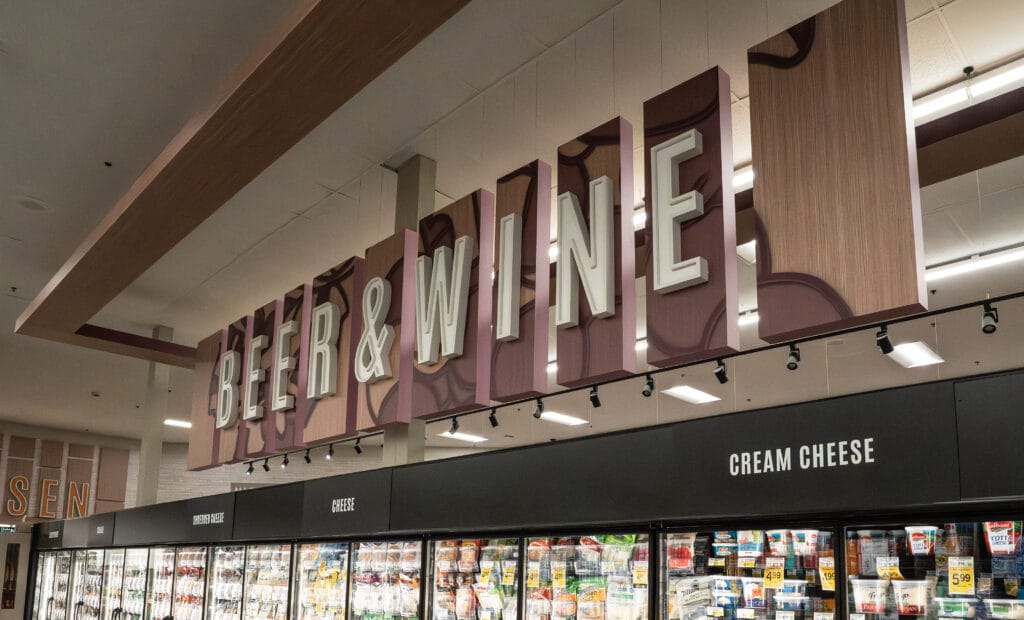Design Integrity in Rollout: Where Great Ideas Live or Die
Retail Design Execution is where great design succeeds or fails. This final chapter in our ROI of Store Design series shows how smart rollout and operational consistency turn vision into performance—and protect your investment.
This is the third and final installment in our series on the real-world ROI of store design. In Part One, we unpacked branding—the emotional and strategic foundation of retail. In Part Two, we explored space planning and layout—the tools that translate a brand into a physical journey.
In Part Three, we look at something less talked about, but arguably just as critical: retail design execution. Because no matter how bold your brand or smart your layout, a concept without quality execution is just a good idea that never delivered.

Why Retail Design Execution Quality Defines ROI
Let’s get something straight: retail design execution is not theoretical. It’s not an art project. It’s an investment vehicle. A tool meant to produce results. And while it’s tempting to think the designer’s job ends once drawings are handed off, that’s not how long-term value is built.
We like to think of ROI in retail design as a graph:
- The X-axis is Design Quality.
- The Y-axis is Execution Quality.
When either is low, even the best concept fails to connect. When both design quality and execution quality are high, the ROI multiplies. And that’s where a well-structured store rollout strategy comes into play. If the design is great but the rollout is rushed, inconsistent, or poorly value-engineered, that beautiful concept turns into a frustrating customer experience—and ROI plummets.

Real-World Quality Means Real-World Results
A well-designed feature wall or cash wrap concept might look incredible in a rendering, but if the actual material peels, warps, or isn’t installed with precision, it undermines trust. Design integrity is about more than aesthetics; it’s about how those aesthetics perform, last, and feel to the shopper in real life.
A smart designer doesn’t just think in terms of look and feel—they think in terms of real-world conditions, sourcing, scalability, and budget. Every detail—hardware, lighting, finishes—must be selected with execution in mind.
Design ≠ DIY: Why Professional Retail Design Execution Matters
There’s a temptation, especially in cost-conscious rollouts, to take a “good enough” approach to implementation. That can mean cutting corners or overcorrecting with cost-saving substitutions, such as swapping engineered quartz for bargain laminate or custom lighting for cheap, off-the-shelf fixtures.
It’s the equivalent of saying: “I want a premium experience, but I’m okay with it looking and feeling average.” That’s not value engineering in retail. That’s brand erosion.
Value engineering, done properly, is about making smart substitutions that preserve the design intent and the customer experience. It’s proactive, not reactive. It happens at the front end—not when the paint’s already been ordered and someone in procurement starts trimming costs with a red pen.
Retail design is not an art project. It’s an investment vehicle.
Operations Are Part of the Rollout Too
Retail Design Execution doesn’t stop at construction. It carries through to operations, because even the most stunning store can’t make up for out-of-stock products, unclear pricing, or indifferent customer service.
We tell every client:
“We can design the stage perfectly—but if the performance falls flat, the customer leaves disappointed.”
That means:
- Merchandising must align with the space’s intent.
- Assortment needs to reinforce the brand promise.
- Pricing, staffing, cleanliness, and hospitality all must match the story the space is telling.
Design builds the expectation. Operations fulfill (or fail) it.

Building to Last: The Final ROI Layer
Brands that drive long-term value know that execution is not a phase—it’s a mindset. The most successful retail rollouts:
- Treat installation as part of the design strategy.
- Invest in durable, scalable materials from the start.
- Create consistency across locations without losing site-specific adaptability.
- Train staff to operate within the experience the design is meant to support.
This is how ROI extends beyond the grand opening. This is how great retail is sustained.
Summary
Retail Design Execution is where great store concepts succeed or fail. This stage ensures that your retail design not only looks impressive on paper but performs consistently in real-world conditions. Proper execution protects your investment, strengthens brand integrity, and maximizes ROI.
From durable materials to precise installation and operational alignment, every element matters. Thoughtful retail rollout strategies and professional implementation turn bold design ideas into functional, customer-focused experiences that drive long-term success.
Key Takeaways
- Execution quality multiplies ROI: even great designs fail without proper implementation.
- Design integrity ensures aesthetics, durability, and functionality align with brand values.
- Value engineering should enhance, not compromise, the customer experience.
- Operations—merchandising, staffing, cleanliness, and pricing—are integral to design success.
- Consistent rollout across locations strengthens brand recognition and long-term value.
Frequently Asked Questions
Q. What does “design integrity” mean in retail execution?
A. Design integrity refers to maintaining the original design intent and quality throughout the rollout process, from material choices to installation and merchandising, ensuring the customer experience matches the brand promise.
Q. How can execution impact ROI even if the design is great?
A. Poor execution causes inconsistencies, customer frustration, and a disconnect between brand and experience, ultimately undermining the return on your design investment, even if the concept is strong.
Q. What’s the difference between value engineering and cutting corners?
A. Value engineering is proactive and strategic, finding cost-effective solutions that preserve design intent and functionality. Cutting corners is reactive and often compromises the brand experience and long-term ROI.
Q. Why include operations in store design discussions?
A. Operations are critical because great design sets expectations, but only strong merchandising, staffing, pricing, cleanliness, and customer service can fulfill them. Successful execution integrates both design and operational excellence.
The ROI of Store Design Series
- Part One: How Retail Branding Drives The ROI Of Store Design: Strategies, Metrics & Case Study
- Part Two: How Store Planning & Design Drive ROI In Retail: Strategy, Flow, And Measurable Impact
- Part Three: Design Integrity in Rollout: Where Great Ideas Live or Die
